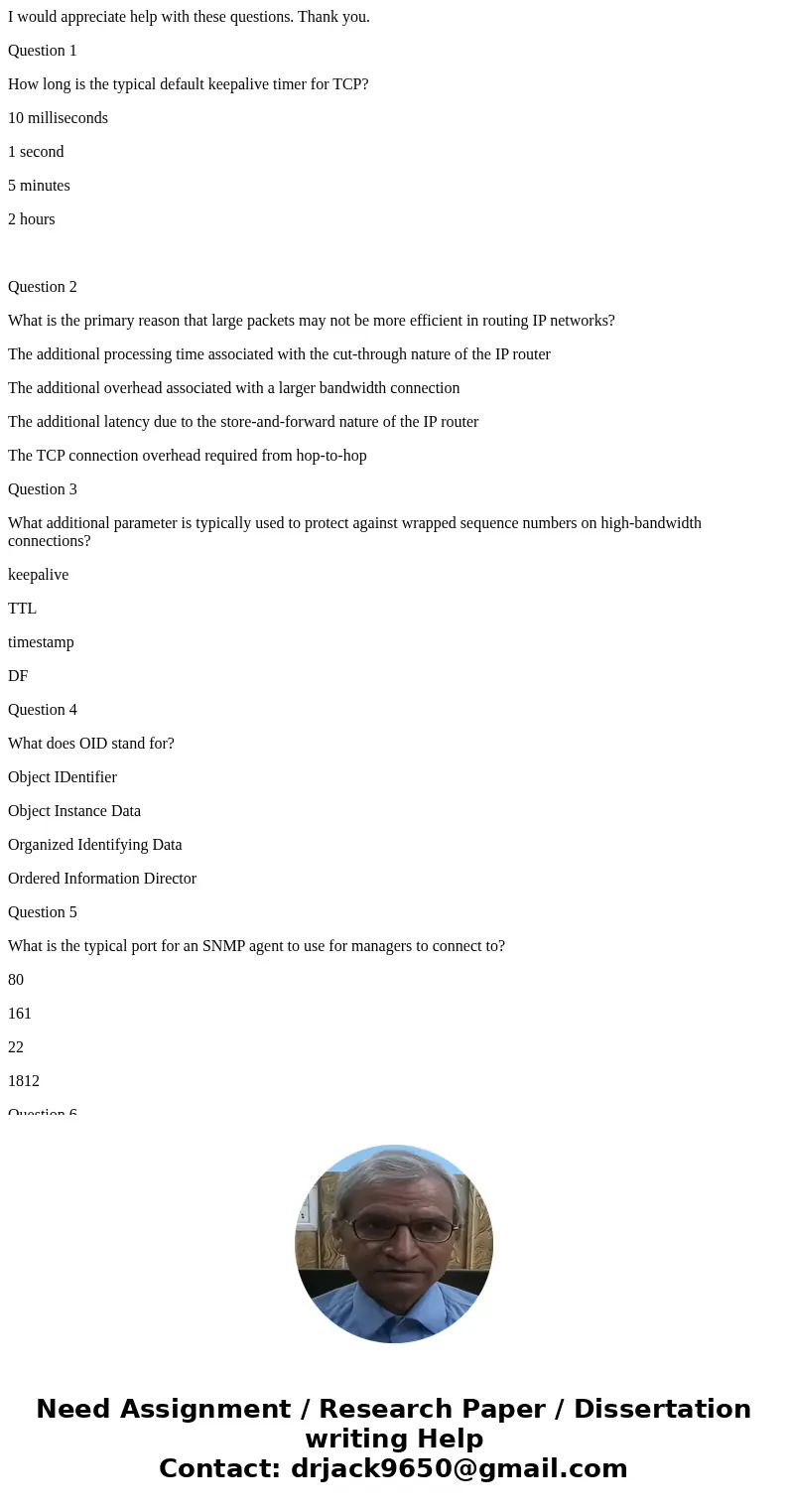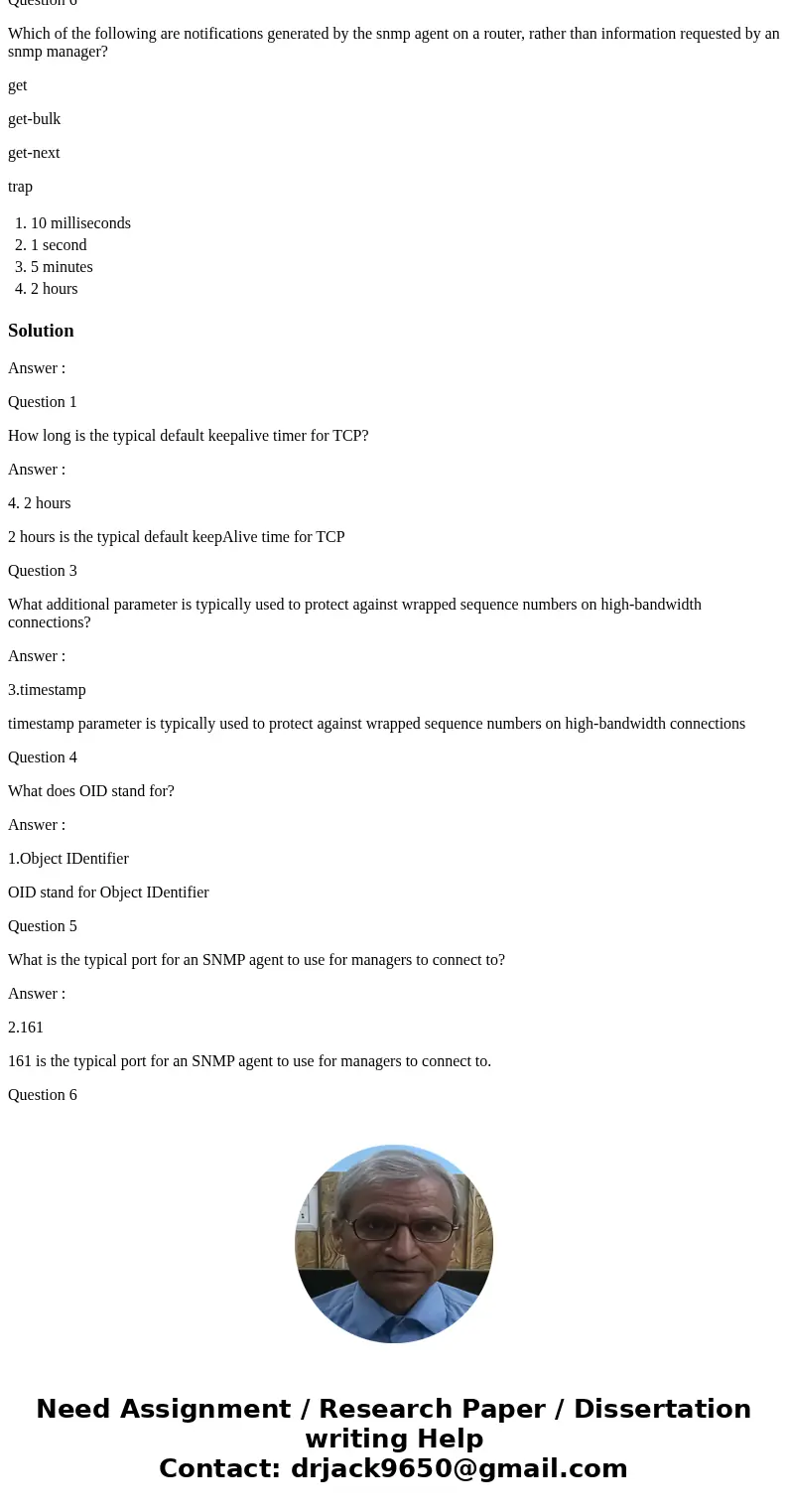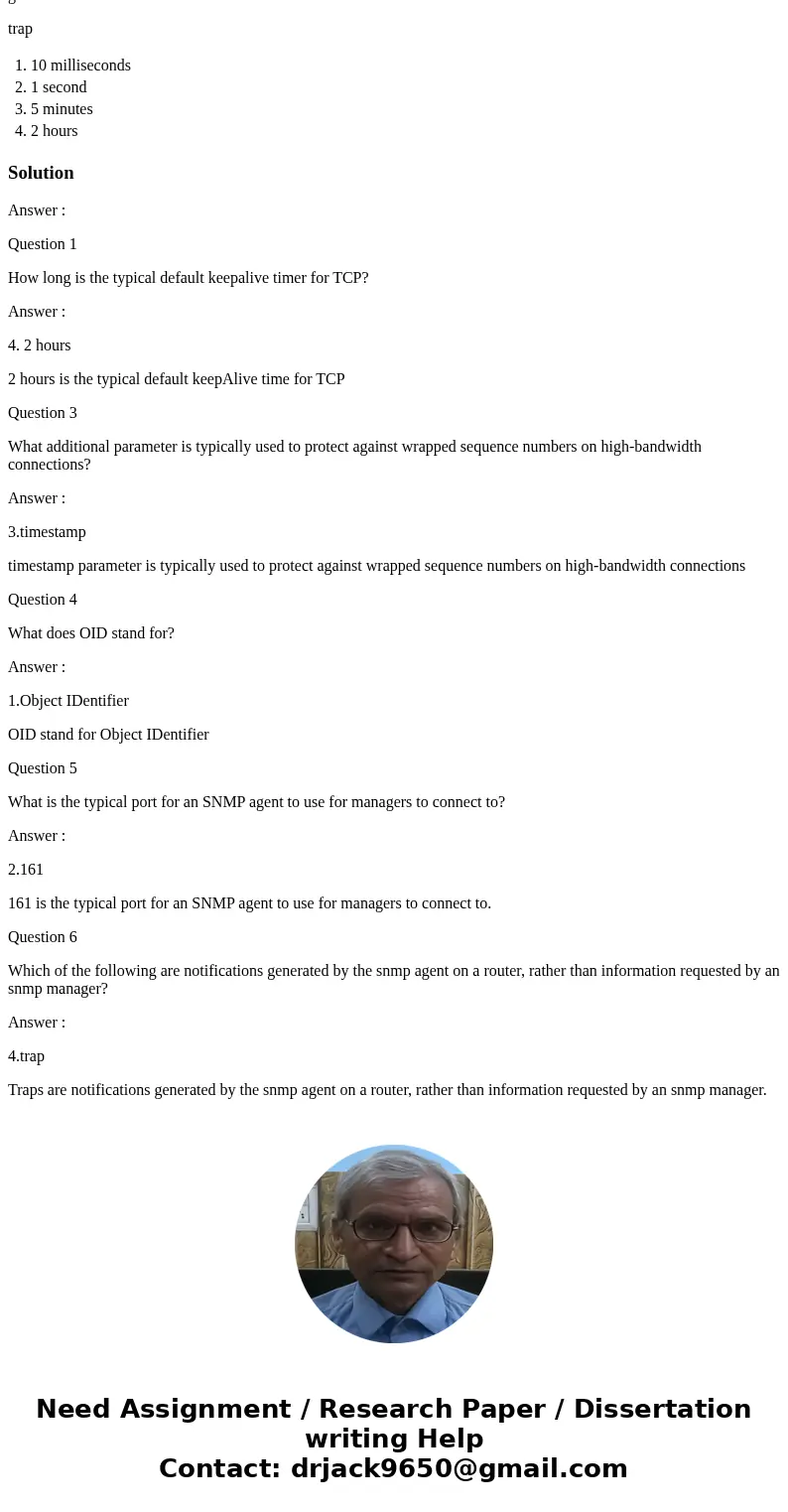I would appreciate help with these questions Thank you Quest
I would appreciate help with these questions. Thank you.
Question 1
How long is the typical default keepalive timer for TCP?
10 milliseconds
1 second
5 minutes
2 hours
Question 2
What is the primary reason that large packets may not be more efficient in routing IP networks?
The additional processing time associated with the cut-through nature of the IP router
The additional overhead associated with a larger bandwidth connection
The additional latency due to the store-and-forward nature of the IP router
The TCP connection overhead required from hop-to-hop
Question 3
What additional parameter is typically used to protect against wrapped sequence numbers on high-bandwidth connections?
keepalive
TTL
timestamp
DF
Question 4
What does OID stand for?
Object IDentifier
Object Instance Data
Organized Identifying Data
Ordered Information Director
Question 5
What is the typical port for an SNMP agent to use for managers to connect to?
80
161
22
1812
Question 6
Which of the following are notifications generated by the snmp agent on a router, rather than information requested by an snmp manager?
get
get-bulk
get-next
trap
| 1. | 10 milliseconds | |
| 2. | 1 second | |
| 3. | 5 minutes | |
| 4. | 2 hours |
Solution
Answer :
Question 1
How long is the typical default keepalive timer for TCP?
Answer :
4. 2 hours
2 hours is the typical default keepAlive time for TCP
Question 3
What additional parameter is typically used to protect against wrapped sequence numbers on high-bandwidth connections?
Answer :
3.timestamp
timestamp parameter is typically used to protect against wrapped sequence numbers on high-bandwidth connections
Question 4
What does OID stand for?
Answer :
1.Object IDentifier
OID stand for Object IDentifier
Question 5
What is the typical port for an SNMP agent to use for managers to connect to?
Answer :
2.161
161 is the typical port for an SNMP agent to use for managers to connect to.
Question 6
Which of the following are notifications generated by the snmp agent on a router, rather than information requested by an snmp manager?
Answer :
4.trap
Traps are notifications generated by the snmp agent on a router, rather than information requested by an snmp manager.



 Homework Sourse
Homework Sourse